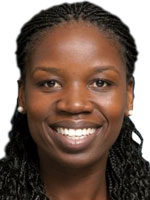Going to trial
Rookie and veteran lawyers offer strategies and techniques on how to overcome challenges and maximize jury awards
Trying cases, large and small, can present challenges regardless of the number of cases you have tried to verdict. Our authors include a new lawyer just off the heels of her first trial and a multi-year CAALA Trial Lawyer of the Year nominee who has tried over one hundred cases to verdict. In addition, we have leading vocational experts outlining their methods for maximizing economic damages as well as a number of outstanding lawyers who pride themselves in mastering the art of trial lawyering.
Whether you are embarking on your first trial or your fiftieth, this issue of the Advocate is for you.
Leading off this issue is new lawyer and recent CAALA Plaintiff Trial Academy graduate, Aslin Tutuyan. In her article, Lessons Learned from my First Trial, Tutuyan gives a riveting recap of her first bout in the ring. From voir dire to verdict, Tutuyan talks about the impact the case had on her and what she took away from the experience. Her journey serves to help others preparing for their first trial and will resonate with those who fought many battles in the courtroom.
Trial lawyer Daniel Zohar analyzes the purpose and scope of trial briefs and 402 hearings; explaining why the trial brief is your last and best chance to influence the judge.
Robert Simon and Sevy Fisher, in their article on jury selection, give us a primer on how to approach voir dire from the first questions to the dreaded dismissal for cause. They deconstruct the jury panel by breaking apart the different personality types into distinctive categories. Simon and Fisher also provide useful tips on how do deal with each personality type and how to get the jury talking.
In 20-Minute Voir Dire, Christa Haggai Ramey offers up tips on how to fight to get more time for jury selection and how to work within the time limits in cases where your requests for an extended voir dire is denied.
Jonathan Howell’s Lessons from trials with minimal medical treatment, offers his perspective on trying minor-impact, soft-tissue (MIST) cases where the client has either failed to treat or delayed their treatment and there is minimal property damage. His tips are helpful when faced with unfavorable facts in the case and unreasonably low offers from insurance companies.
You have some dynamite stuff on a video deposition and want to play it first thing in trial? San Francisco trial attorney Brian J. Malloy will help make sure that you can do just that.
Seasoned trial lawyer Nicholas Rowley offers an impassioned plea to all plaintiffs’ lawyers to defy the insurance companies’ meager settlement offers and try more cases. In Say No to cheap settlements and Yes to trial by fire, he provides useful trial preparation tips and highlights the do’s and don’ts of argument and examination. He also throws down a challenge to more seasoned CAALA members.
And when the trial is over, you may find helpful the article by Jill McDonell, Making and opposing new-trial motions. Jill puts to work her considerable experience in appellate and dispositive briefs and state and federal law-and-motion practice in her explanation of how to handle this post-trial work.
We round out this issue with two articles that are useful whether you are trying or settling a case. What attorneys need to know about worklife expectancy by vocational analysts and economists A. M. Gamboa, Jr., Joseph T. Crouse and Chris Reyes discusses how government statistics can be used to build the case for reduced worklife expectancy when a client is partially disabled and has returned to work.
With her article, Managing client expectations: Don’t promise them the moon, Laura F. Sedrish discusses how important it is to set realistic goals and avoid the client disappointment that can get you subbed out of the case or threatened with a malpractice action.
It has been a pleasure working with these talented authors. Thank you to all who contributed to this issue.
Ibiere N. Seck

Ibiere N. Seck is a Partner and Trial Lawyer at The Cochran Firm - California with a focus on complex catastrophic injury, wrongful death, traumatic brain injury, police misconduct and sexual assault of minors. She exclusively represents plaintiffs in civil litigation/trial and prides herself in being a zealous advocate on an endless pursuit for justice on behalf of people who have been wronged, harmed or injured. Since 2010, she has been recognized as a “Rising Star” by the Super Lawyers publication. She was the recipient of CAALA’s 2014 Rising Star Award, and the National Bar Association’s 2015 Nation’s Best Advocates 40 Under 40. In 2016, Ms. Seck was recognized in SuperLawyers Top 100 Up-and-Coming Attorneys in Southern California and SuperLawyers Top 50 Up-and-Coming Women Attorneys in Southern California. She was also the recipient of CAOC’s 2016 Street Fighter of the Year award. Ibiere is a board member of the Los Angeles Trial Lawyer’s Charities, Consumer Attorneys Association of Los Angeles, Consumer Attorneys of California and John M. Langston Bar Association, Los Angeles County Bar Association Litigation Section Executive Committee and Westside Children’s Center. She is also a volunteer attorney with the Mesereau Free Legal Clinic in South Central Los Angeles where she advocates on behalf of low-income Californians and under-served communities of color.
Copyright ©
2026
by the author.
For reprint permission, contact the publisher: Advocate Magazine
